This article was medically reviewed by Jeremy Silverman, DMD. Jeremy Silverman is a Dentist and Founder of Peace of Mind Dental Studio in Chandler, Arizona. With a decade of professional dental experience, he focuses his practice on incorporating mental well-being into the core of oral care. He also partakes in continuing education and stays up to date with the newest techniques, technology, and products. Dr. Silverman holds a BA in Psychobiology from the University of California at Los Angeles and a DMD from Midwestern University. He is a member of the American Dental Association, Arizona Dental Association, and Central Arizona Dental Society. Dr. Silverman is also Laser Certified by the World Clinical Laser Institute.
This article has been viewed 432,073 times.
Poking wires on braces are a very common and irritating problem. These can cause sores and small cuts and abrasions on your gums and cheeks. Reducing discomfort is the first goal of dealing with this problem, followed by fixing the wire. While there are some ways you can fix poking wires at home, you should always see your orthodontist or dentist to follow up. In most cases, your orthodontist will want to replace a broken wire or cut any long pieces of wire that are poking you .
Steps
Using Orthodontic Wax
-
1Get some orthodontic wax. Dentist Jeremy Silverman emphasizes that "orthodontic wax placed over the sharp area will provide relief." Your orthodontist should have supplied you with some when you got your braces.
- If you have run out, you can buy it at most pharmacies.
- Orthodontic wax comes in small cases containing long strips of wax.
- If you cannot find wax at a pharmacy, call your orthodontist for some.
-
2Remove a small amount of wax from one of the wax strips. Dentist Jeremy Silverman advises, "be sure to wash your hands thoroughly and brush your teeth prior to applying the orthodontic wax. Pinch a pea sized amount between the thumb and forefinger and roll the wax into a ball. It can be flattened slightly to cover more area if needed."
- Make sure your hands are clean and dry before touching the wax.
- Use only new, unused wax on your braces.
Advertisement -
3Make sure the wire or bracket that is poking you is dry and clean. It can help to brush your teeth carefully to remove any food or debris from the wires, before applying wax.
- To dry your braces, hold your lips or cheeks away from the area with poking wires.
- Let it air dry for a few seconds or use sterile gauze and place it between the brackets and the inside surface of your lip to dry.
- You can now apply the wax.
-
4Apply the orthodontic wax ball to the poking wire. All you have to do is press it onto the offending area. Dentist Jeremy Silverman shares that, "your tongue can be used to make slight adjustments if needed."
- Put the ball of wax on your fingertip.
- Touch the wax to the poking wire or bracket.
- Press down gently to cover the wire. Pressure on your teeth or braces while receiving orthodontic treatment can cause some discomfort. If you feel soreness while pressing on the wire this is completely normal.
-
5Remove the wax before eating or brushing your teeth. You don't want the wax to get into your food while you eat.
- Discard any used wax immediately.
- Replace it with new wax after eating or brushing your teeth.
- Continue to use the wax until you can see your orthodontist or dentist to fix the wire.
- If you do happen to swallow the wax, that's okay. It won't harm you.
Fixing a Poking Wire
-
1Try to bend thinner poking wires using the eraser end of a pencil. You won't be able to fix all poking wires this way, but this method will help in many cases.
- Find the wire in your mouth that is poking you.
- If it is a thin wire, get a pencil with a clean eraser.
- Gently touch the eraser to the poking wire.
- Push the wire gently to bend it.
- Try to tuck the poking wire behind the arch wire.
- Only do this for thinner, more flexible wires.
-
2Use tweezers to fix poking wires in the back of your mouth. Sometimes, eating hard foods can cause flexible wires in the back of your mouth to slip out of the bracket slots on the back teeth. Dentist Jeremy Silverman shares, "with small wire clippers or nail clippers, you can also safely snip the offending wire."
- If this occurs, you can try to fix these with tweezers.
- Get a small pair of thin nosed tweezers. Make sure they are clean before using them in your mouth.
- Grab the end of the poking or loose wire with the tweezers.
- Guide it back into the tube on the bracket slot.
- If you can't get the wire back into the slot, you will need to call your orthodontist.
-
3Fix broken laces that poke your lips using tweezers and pliers. You will need to see your orthodontist to follow up for a replacement.
- If the wire lacing of your braces is broken in the front of your mouth, you can try to tuck the broken lace behind the arch wire or around a bracket.
- Use tweezers to bend the wire away from your lips and cheeks.
- If the lace is on top of the arch wire you can also remove it by cutting it with pliers or wire clippers. This is only recommended as a last option and should be followed by a visit to the orthodontist as soon as possible.
Treating Cuts and Sores
-
1Use a rinse to clean your mouth. This can help to treat any sores or cuts caused by poking wires.
- Dissolve one teaspoon of salt in one cup of lukewarm water.
- Use this as a mouthwash by swishing around your mouth for 60 seconds.
- This may sting at first, but it will help to relieve prolonged discomfort and prevent infection.
- Repeat this four to six times a day.
-
2Avoid foods that are acidic, sugary, or hard to eat. Instead, eat a soft, bland diet.
- Eat foods such as mashed potatoes, yogurt, and soups.
- Avoid coffee, spicy foods, chocolate, citrus fruits or juices, nuts, seeds, and tomatoes.
- These foods are high in acid and can aggravate any sores or cuts from your wires.
-
3Drink cold water or iced tea. Cold (unsweetened) beverages can help ease the pain from sores.
- Use a straw to sip a cold drink, taking care not to scrape the cut or sore.
- You can also eat popsicles to apply cold to the sore.
- Alternatively, suck on an ice cube. Let the ice sit on the cut or sore for a few seconds at a time.
-
4Put an oral anesthetic gel onto any sores or cuts. According to dentist Jeremy Silverman, "topical oral anesthetics, such as Anbesol or Orajel, can provide some [temporary] relief when rubbed on the more painful areas."
- You can buy Orajel or Anbesol at most pharmacies.
- Put a small amount of the gel on the end of a q-tip.
- Rub the gel over any sores or cuts in your mouth.
- You can reapply the gel three or four times each day.
Expert Q&A
Did you know you can get expert answers for this article?
Unlock expert answers by supporting wikiHow
-
QuestionI have lost my rubber band for my braces. Is it ok to wait until I see my doctor? Or should I call immediately?
 Cristian Macau, DDSDr. Macau is an oral surgeon, periodontist, and aesthetician at Favero Dental Clinic in London. He received his DDS from Carol Davila University of Medicine in 2015.
Cristian Macau, DDSDr. Macau is an oral surgeon, periodontist, and aesthetician at Favero Dental Clinic in London. He received his DDS from Carol Davila University of Medicine in 2015.
Doctor of Dental Surgery
-
QuestionMy mouth hurts! I tried ice and I couldn't find wax. Please help!
 Cristian Macau, DDSDr. Macau is an oral surgeon, periodontist, and aesthetician at Favero Dental Clinic in London. He received his DDS from Carol Davila University of Medicine in 2015.
Cristian Macau, DDSDr. Macau is an oral surgeon, periodontist, and aesthetician at Favero Dental Clinic in London. He received his DDS from Carol Davila University of Medicine in 2015.
Doctor of Dental Surgery
About This Article
If the wires of your braces are poking out and irritating your cheeks, you can get some relief by using orthodontic wax. To ensure that the wax sticks, first brush your teeth to remove any food and let the area air dry. Once the area is dry, press a pea-sized ball of wax onto the wire until it’s covered. Make sure to take the wax off before you eat or brush your teeth so you don’t end up swallowing it. If you forget, it's okay, the wax won't hurt you! If you want to try and fix the poking wire, get a pencil with a clean eraser and gently touch the wire until it bends away from your lips. For more help from our Dental co-author, like how to treat any cuts or sores caused by the wire, read on.
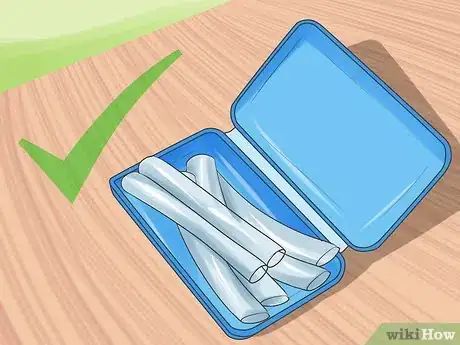
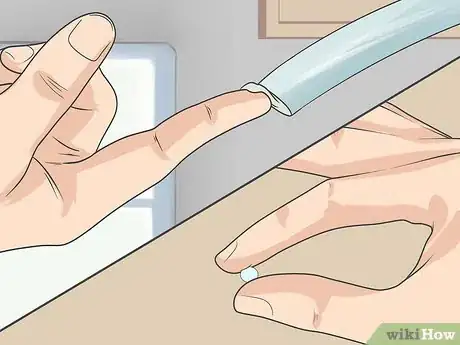
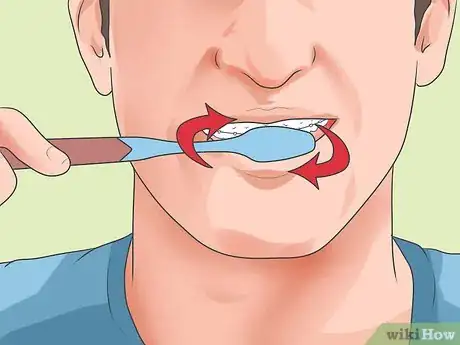

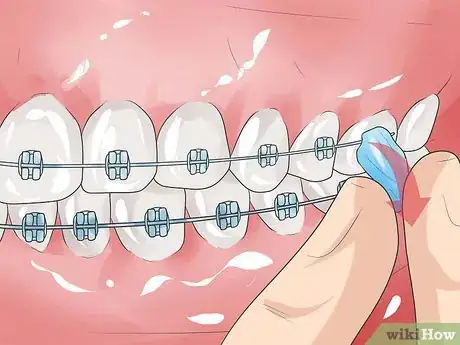
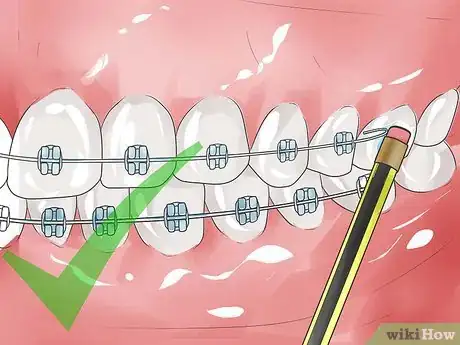

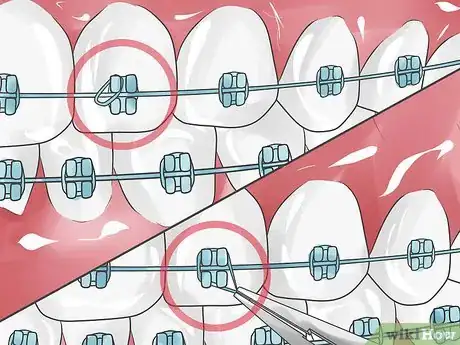
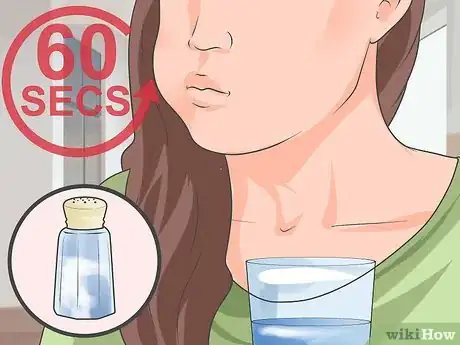

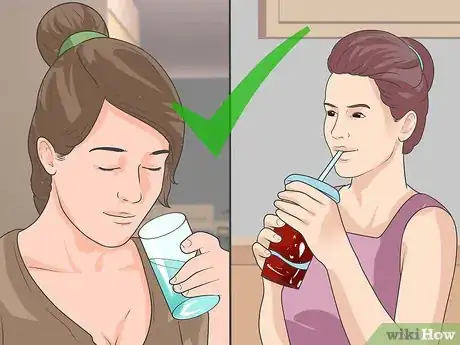
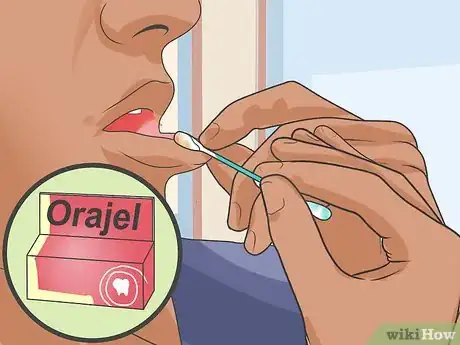
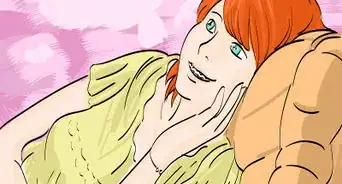

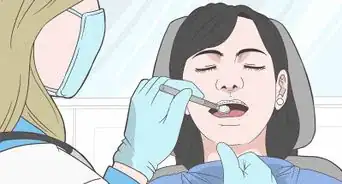

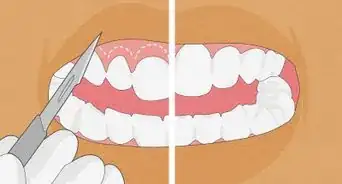
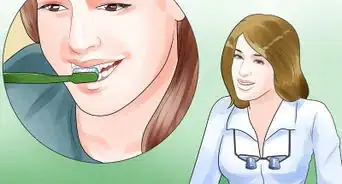


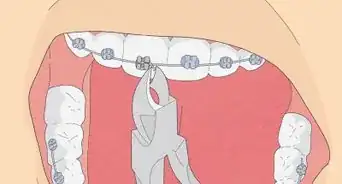

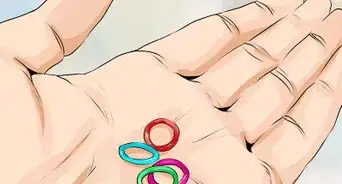
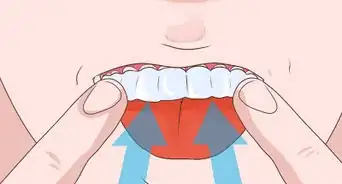
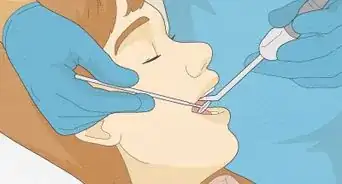
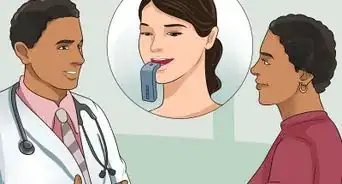













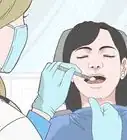




































Medical Disclaimer
The content of this article is not intended to be a substitute for professional medical advice, examination, diagnosis, or treatment. You should always contact your doctor or other qualified healthcare professional before starting, changing, or stopping any kind of health treatment.
Read More...